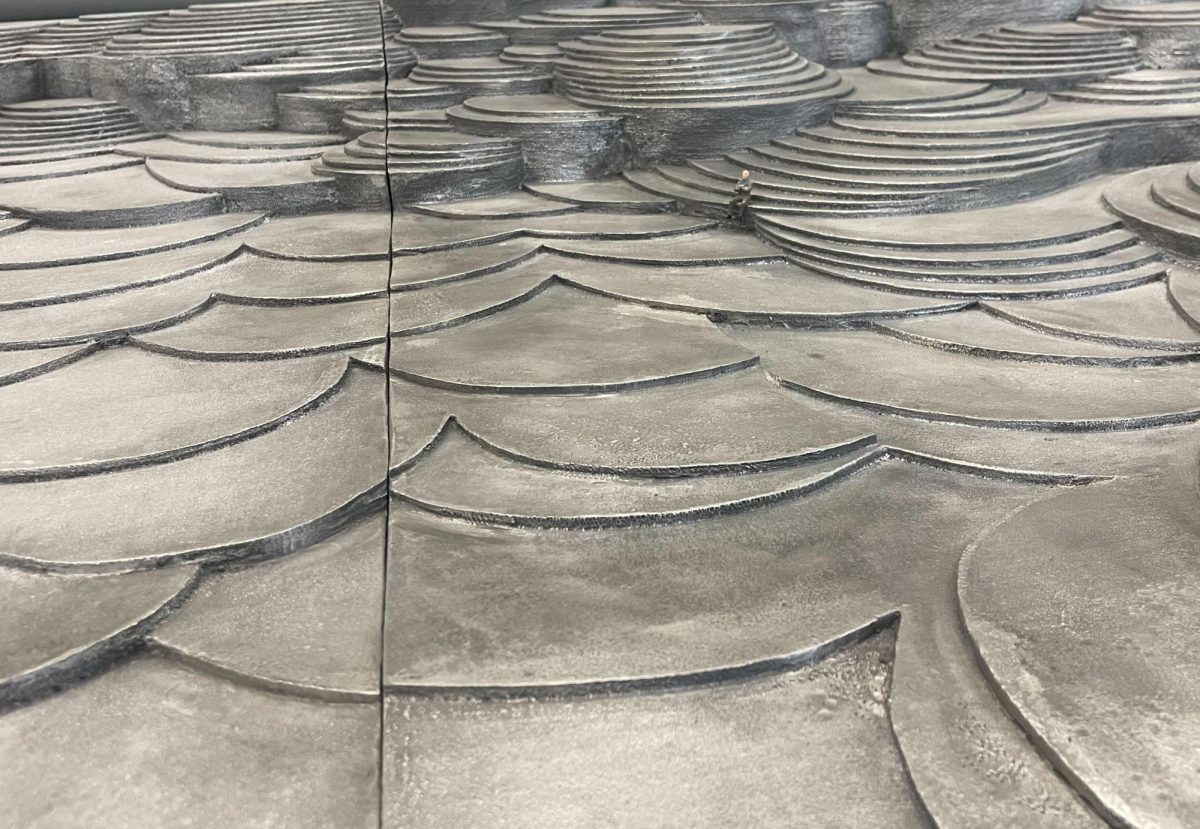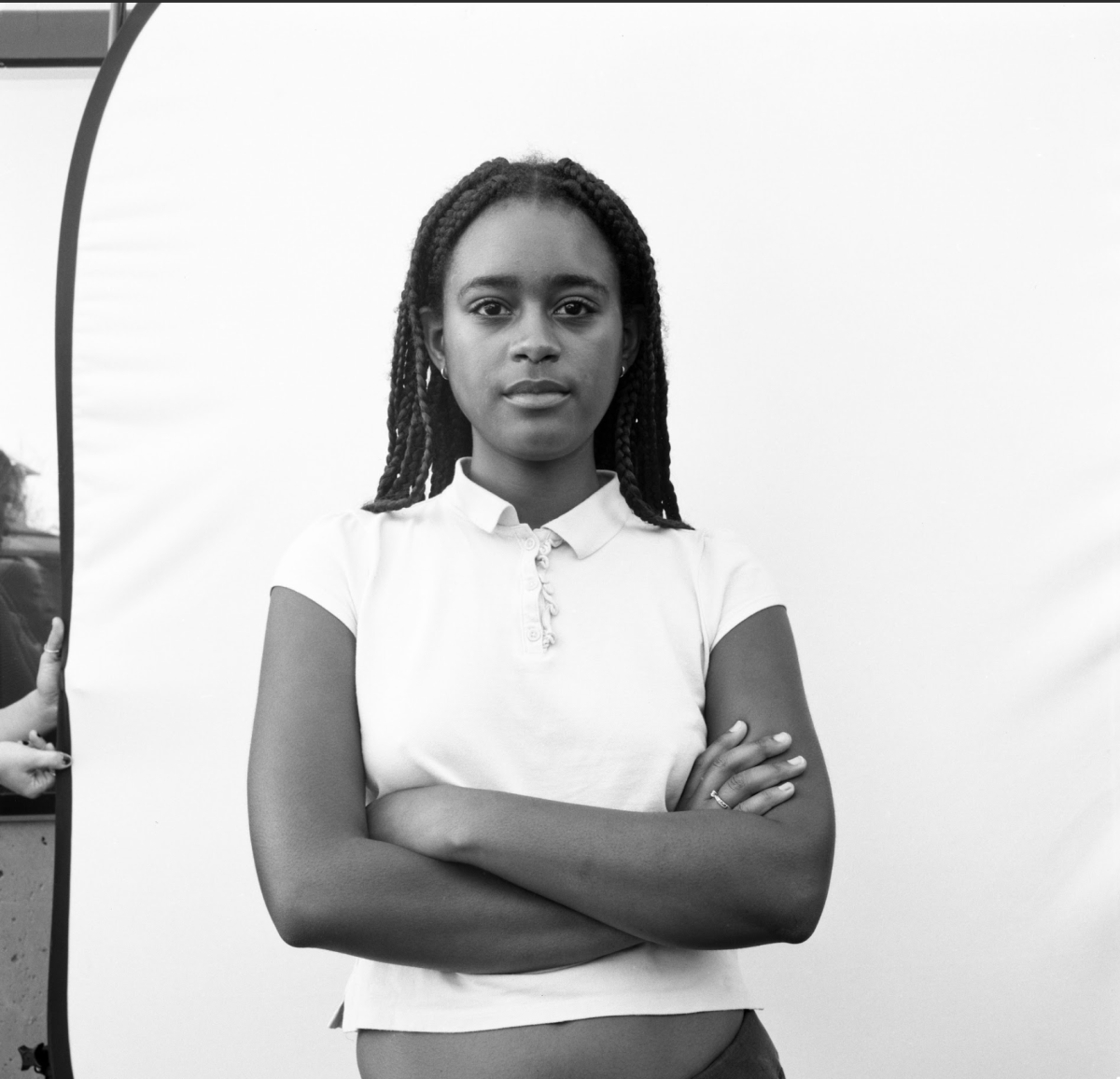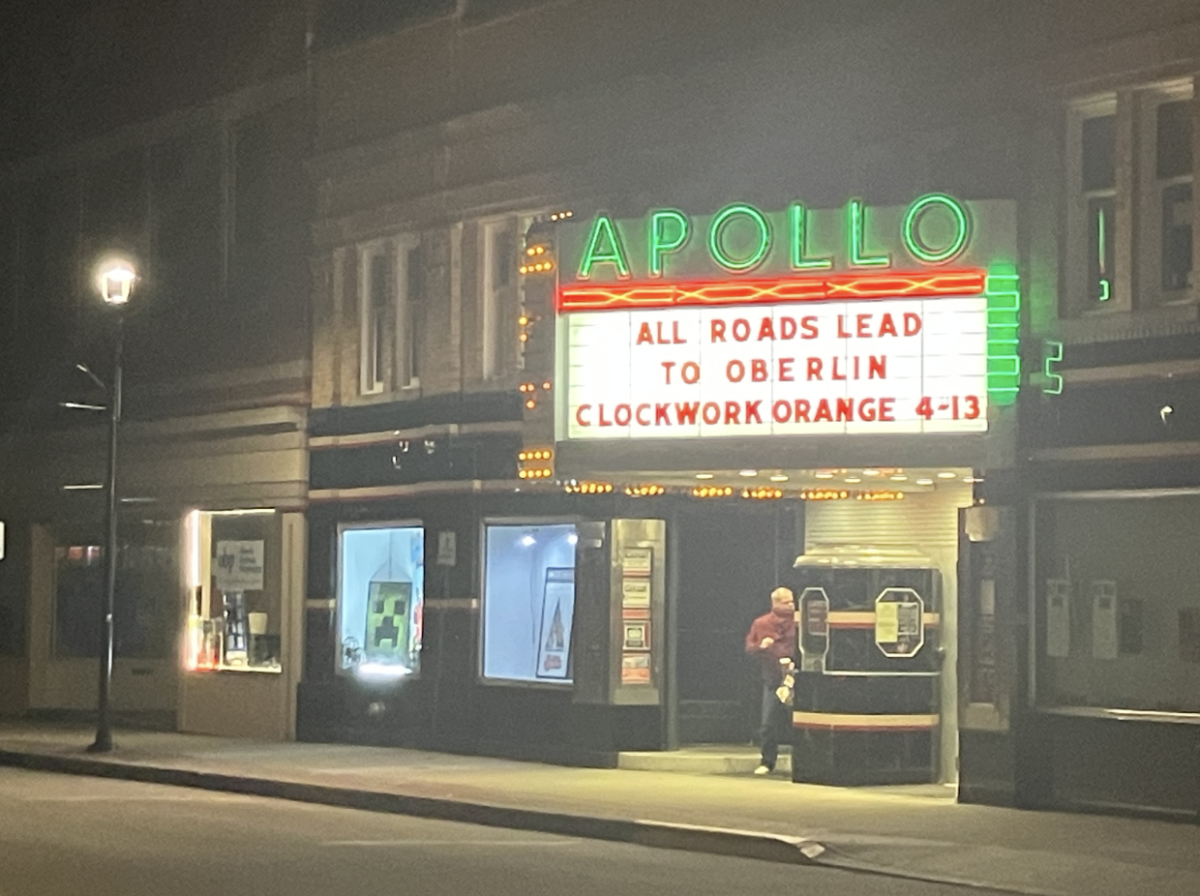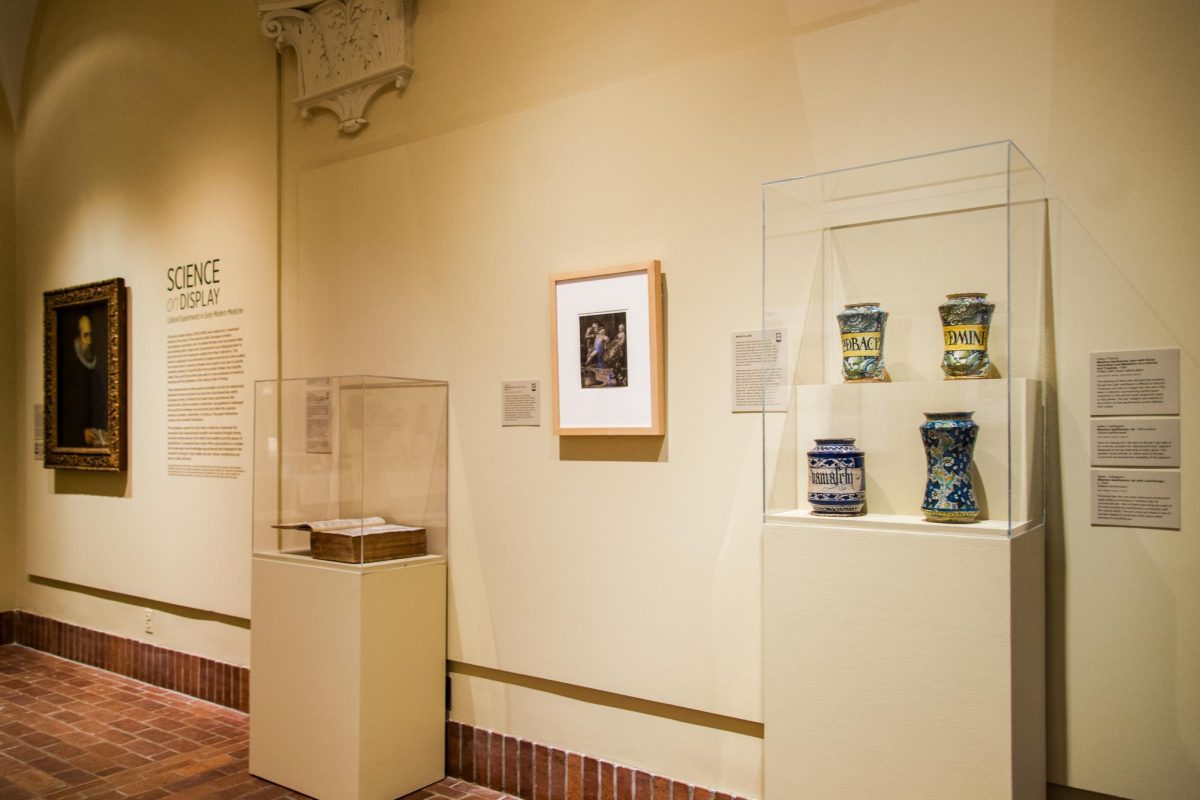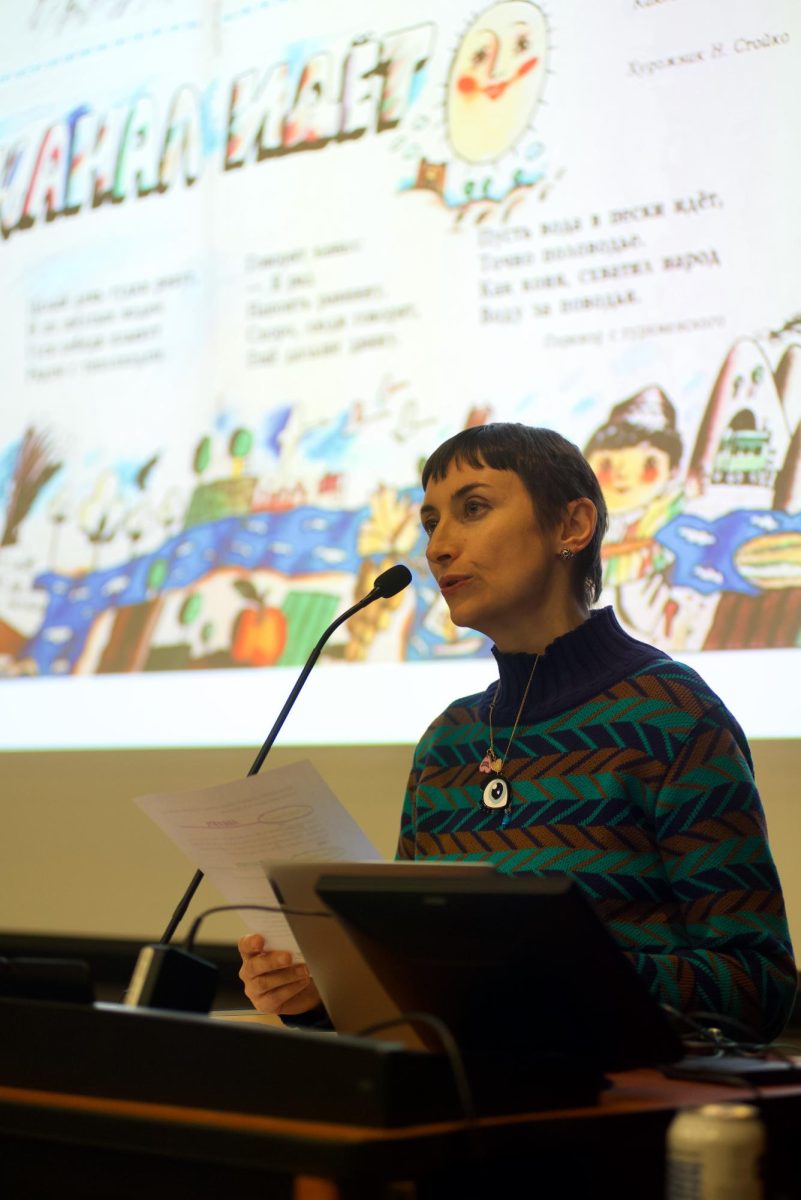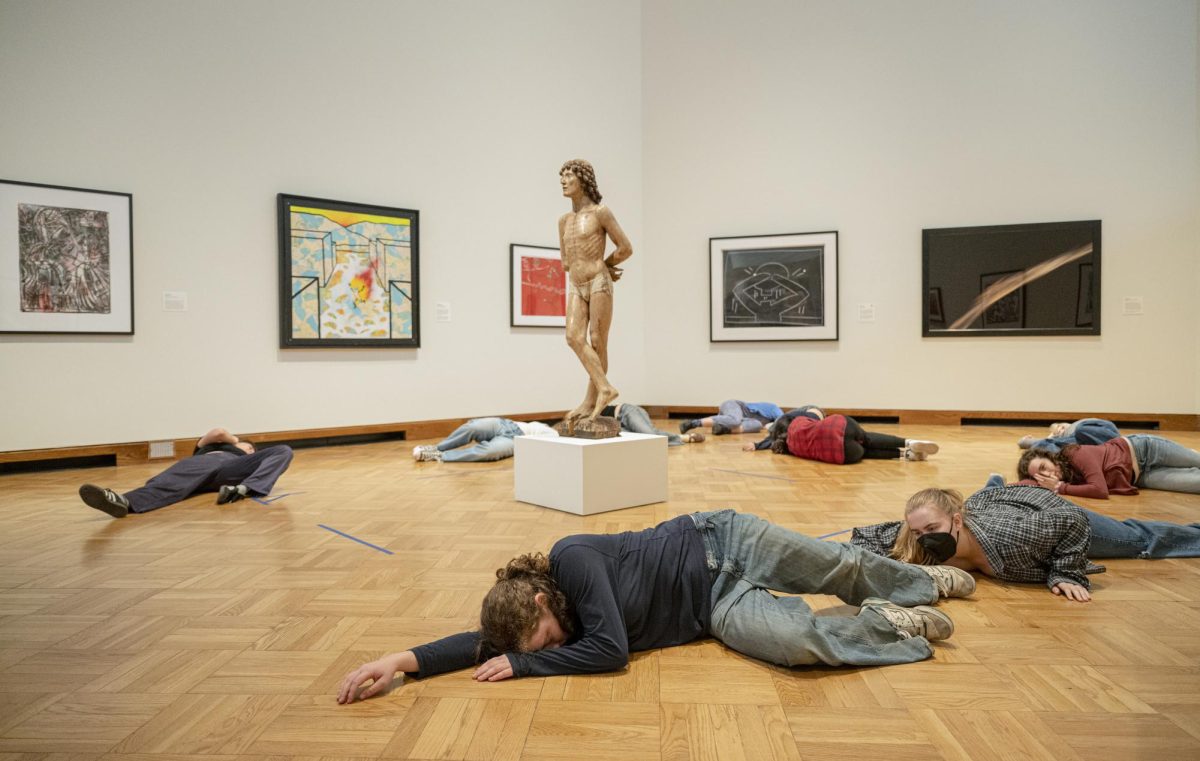On Tuesday, April 23, John G. W. Cowles Director of the Allen Memorial Art Museum Andria Derstine led the dedication ceremony of a sculpture, “Charles River,” by Athena Tacha, OC ’61. Tacha’s sculpture, “Charles River,” was gifted to the College by Tacha and her husband, former Oberlin Professor of Art History and Director of the AMAM Richard Spear. The sculpture now permanently resides in the Eric Baker Nord Performing Arts Annex.
Tacha received her masters’ degree in Art History from Oberlin in 1961. She later returned to Oberlin to serve as the first curator of modern and contemporary art at the Allen Memorial Art Museum and as a professor of Studio Art. Tacha sculpted the structure, which combines curvilinear and rectilinear sections, as a fellow at the Center for Advanced Visual Studies at the Massachusetts Institute of Technology in 1974. She took inspiration from the banks of the nearby Charles River in Cambridge, MA.
“This [sculpture] is the result of her profound investigations of the site, which is between the Boston University Bridge and the univerity’s boathouse, split by a railroad line …, and specifically her ruminations on the forms of the adjoining water, which during that very cold [January], was filled with sharp sheets of overlapping ice,” Derstine said during the Tuesday event.
Discussions about the gift began in 2019 when Spear and Tacha reached out to Derstine, looking to dedicate the sculpture to the College. After the administration approved Derstine’s proposal to accept the donation, museum staff deliberated over where to place “Charles River.” Initially, the sculpture was to be installed on the lawn near the Science Center, similar to “Bound Tetrahedron,” which the museum also oversees. Conservators, though, determined that situating the sculpture outdoors would be detrimental, as rainwater and freezing temperatures would potentially erode its structure.
According to Derstine, the idea to place “Charles River” in the Nord Performing Arts space came from Associate Professor of Mathematics Chris Marx. Chair of the Allen Memorial Art Museum Visiting Committee Carl Gerber, OC ’58, and Marx brought the idea to Derstine, who enthusiastically proposed it to Lecturer and Managing Director of Theater, Dance, and Opera Eric Steggall and Chair of Theater Matthew Wright.
“The [Nord Performing Arts Annex] has only been open for about six years; we opened in 2018,” Steggall said. “And since the conception and subsequent completion of the building, there was always this aspiration for something in the lobby. We’ve had lots of receptions and lots of events here. But this space is so uniquely able to also have an installation like this. There’s been conversations about things on the wall … so it was really a moment of serendipitous confluence. After [Derstine] proposed this idea, it immediately fell into place.”
Derstine commented on the thematic parallels between Tacha’s work and its new location, a hub of theater at Oberlin. Thousands of students, parents, and community members move through the Nord Annex, coming to and from theatrical and operatic performances in Hall Auditorium and the Irene and Alan Wurtzel Theater.
“The work itself has to do — for Athena and for those looking at it — with the concept of flow or movement,” Derstine said. “And when creating it, she was thinking about people actually being able to walk through a landscape that looked like this on the banks of the Charles River. So there is something really interesting about movement and space that one can think about when looking at it. And I do think that relates to theater and to performance in terms of how performers or actors would move their bodies through space. So that’s one thing I really love about where it is.”
Another coincidental bond between the sculpture and its location is the work’s material. Tacha cast “Charles River” with aluminum. Charles Martin Hall, OC 1885 — who funded the construction of the Annex’s adjacent theater, Hall Auditorium — invented the process for extracting and manufacturing aluminum on College Street.
Currently, the sculpture features a small, human figurine, who is dressed in a suit and tie and seated on one of its aluminum steps. The figure establishes a sense of scale, illuminating the size of the Charles River’s banks relative to a person.
“As you’re walking around, it’s just wonderful to come upon a work of art,” Derstine said. “It gets you to stop and think in a new way and wonder, ‘Why is this here? What does this mean? What did it mean to the artist? And what does it mean to me as a person walking through this landscape, orthis building?’”
In addition to this week’s dedication of Tacha’s sculpture, the AMAM will be working with artist Mary Miss to conserve her untitled sculpture, which has been located on the north lawn of the museum since its installation in 1975.


